June 05 - 19, 2002
Endeavour
The Crew
March 2002 --- These four astronauts comprise the prime crew for NASA's STS-111 mission. Astronaut Kenneth D. Cockrell (front right) is mission commander, and astronaut Paul S. Lockhart (front left) is pilot. Astronauts Philippe Perrin (rear left), representing the French Space Agency, and Franklin R. Chang-Diaz are mission specialists, assigned to extravehicular activity (EVA) work on the International Space Station (ISS). Additionally, this crew will drop off the Expedition Five crew members at the orbital outpost, and it will bring back the Expedition Four trio at mission's end.
A Personal Story
As far as I know, there was never anything written down to say that every crew shall have a patch, and I would guess that the very first astronauts borrowed the idea of a flight patch from their experience in the military services where it has been long-standing tradition to have a patch for every squadron or unit. Anyway, there has been a patch for every flight since Alan Shepard.
These days, crews take it as their responsibility to create a patch to represent their missions. It doesn't matter by whom it is designed (artist or crew members), the end result is that the crew comes up with a design that it likes, and submits it to our management for their approval.
In the case of the STS-111 patch, a couple of us had some ideas and we sent our sketches to a friend of mine, a graphic artist, with whom I had worked for the STS-98 patch. He smoothed up our work, and created some designs of his own. I think he provided as many as nine different concepts for us to think about. We narrowed the field to two or three, and the final design was one of his concepts with the addition of many of our modifications.
The STS-111 patch, has a lot of detail and shows the shuttle, ISS, the Astronaut office symbol integrated with the mission number. We used colors to show the involvement of the US, Russia, France, and Costa Rica in the flight. We showed Italy on the Earth to represent their contribution; the MPLM, the acronym MBS is printed on the wing to represent the Canadian contribution; the Mobile Base System, and UF-2 is printed on there to show the ISS assembly flight number. Of course our names are on there, along with those of the up going and down coming expedition crews. The ten stars represent the ten people that will be on orbit when we fly. Six of them form the constellation Cassiopeia, which is one that I like.
Other patches take more of a stylized approach, where the theme of the mission is represented with simpler art.
Q: How did you decide the design of your crew patch for STS-111? Does each of the crewmembers get to put ideas into the design?
Ken Cockrell: That is certainly true. We came up with half a dozen designs that were made by a friend of ours that's a professional graphic design artist out on the West Coast, and he sent us a number of designs, probably eight or nine. We zeroed in on one of the ones that he had, and then put a whole bunch of changes in it -- based on the input from each of the crewmembers -- and finally came up with the patch that we have now, which we're really happy with.
The Artwork
The patch for Mission STS-111 was approved on November 28, 2001.
The STS-111 patch symbolizes the hardware, people, and partner nations that contribute to the flight. The Space Shuttle rises on the plume of the Astronaut Office symbol, carrying the Canadian Mobile Base System (MBS) for installation while docked to the International Space Station (ISS). The mission is named UF-2 for ISS Utilization Flight number two. The ISS orbit completes the Astronaut Office symbol and is colored red, white, and blue to represent the flags of the United States, Russia, France, and Costa Rica. The Earth background shows Italy, which contributes the Multi Purpose Logistics Module (MPLM) used on this flight to re-supply ISS. The ten stars in the sky represent the ten astronauts and cosmonauts on orbit during the flight, and the star at the top of the patch represents the Johnson Space Center, in the state of Texas, from which the flight is managed. The names of the STS-111 crew border the upper part of the patch, and the Expedition Five (going up) and Expedition Four (coming down) crews’ names form the bottom of the patch.
The STS-111 patch was designed by Marc Jacobs and the STS-111 crewmembers but Paul S. Lockhart did most of the work on getting it all together, usually the rookies are given the job of doing the patch.
(Special note from us; take a look ate the STS-1 patch and then at the STS-111 patch and see that there are some similarity's between the two patches).


The pantone colors used in the patch.
------
Marc Jacobs about his design:
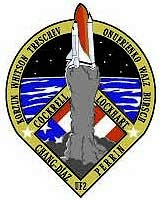
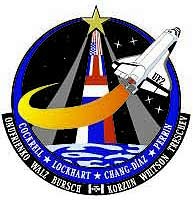
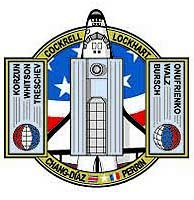
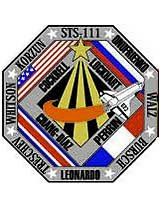
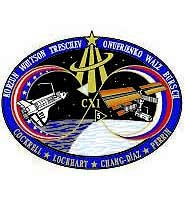
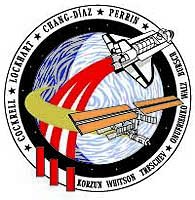
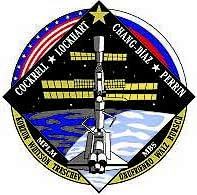
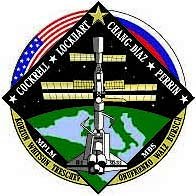
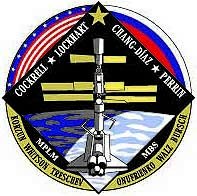
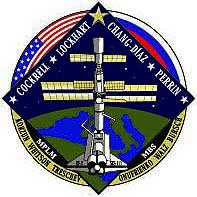
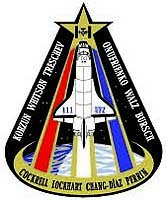
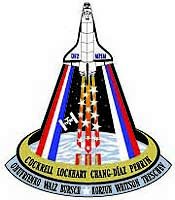
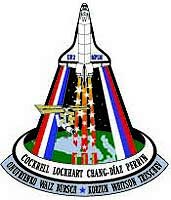
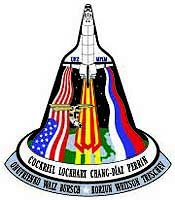
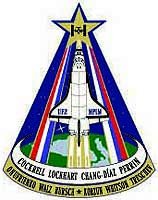
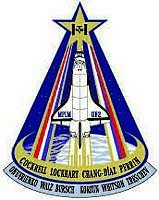
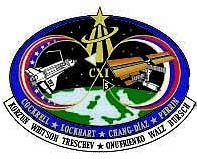
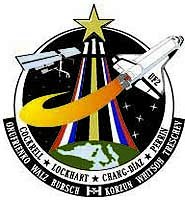
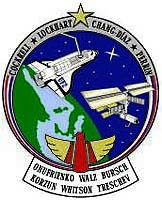
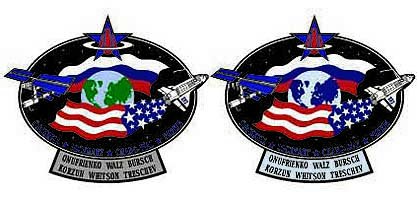
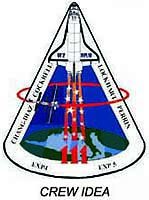
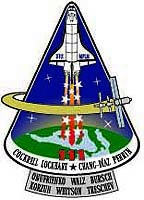
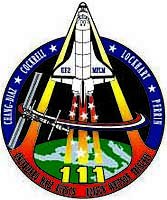
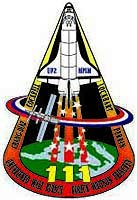
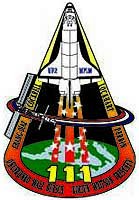
Spot the Patch !!!
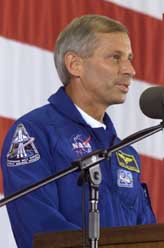
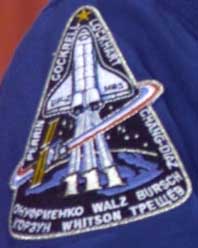
The STS-111 patch seen on Astronaut Kenneth D. Cockrell's arm, during the STS-111 and Expedition Four crew return ceremonies at JSC June 21, 2002.